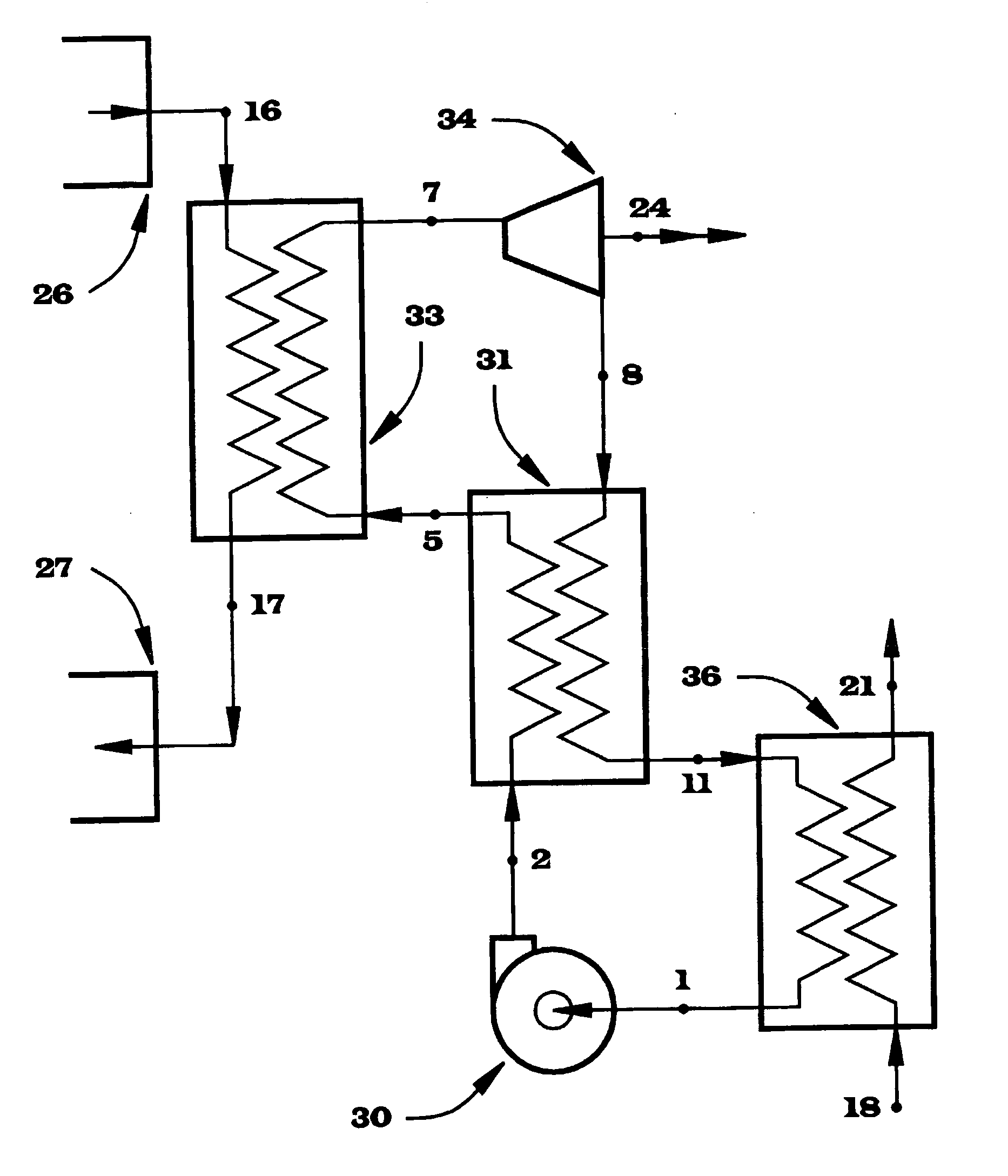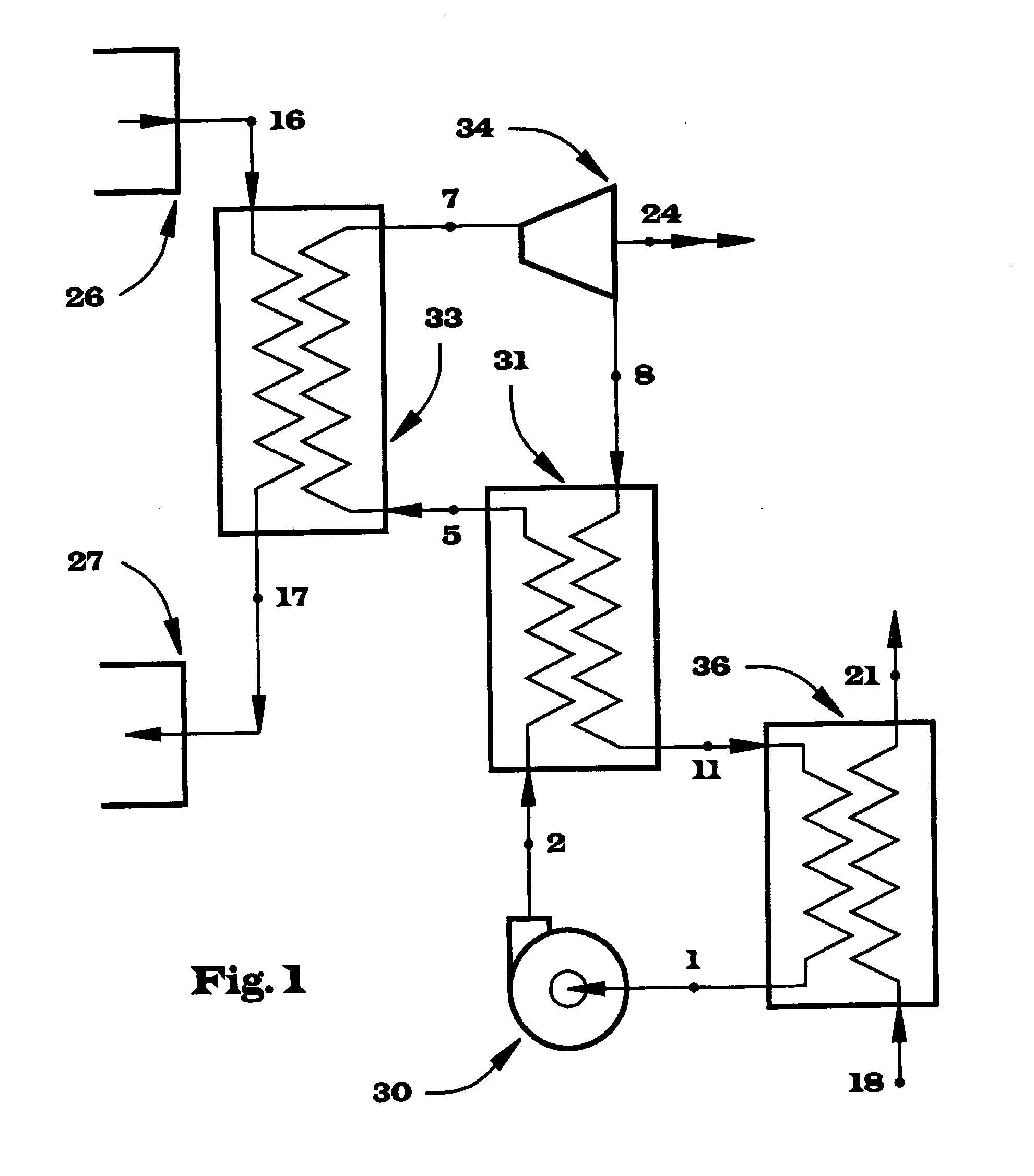Method of converting energy
a technology of energy conversion and energy, applied in the direction of steam engine plants, machines/engines, mechanical equipment, etc., can solve the problems of affecting the performance of the system
- Summary
- Abstract
- Description
- Claims
- Application Information
AI Technical Summary
Benefits of technology
Problems solved by technology
Method used
Image
Examples
Embodiment Construction
[0027] Selection of said working fluid is important for the practical application of the present invention. Although many multi-component fluids can be used as said working fluid, the preferred selection is a binary mixture of ammonia and water. Ammonia is a common industrial fluid, relatively inexpensive, readily mixes with water, not flammable, not a greenhouse gas and relatively environmentally benign. In high concentrations ammonia is a health hazard but it has the advantage of releasing a highly objectionable odour at very low concentrations, which serves to encourage early evacuation of a contaminated area FIG. 9 describes by way of example the temperature change across a two-phase region from bubble point 62 to dew point 64 at a constant pressure, as shown in FIG. 6, as it relates to the percent of ammonia in the mixture. The maximum change in temperature from bubble point 62 to dew point 64 approaches 170° F. at about 75% ammonia and exceeds 100° F. over a range from 30% amm...
PUM
 Login to View More
Login to View More Abstract
Description
Claims
Application Information
 Login to View More
Login to View More - R&D
- Intellectual Property
- Life Sciences
- Materials
- Tech Scout
- Unparalleled Data Quality
- Higher Quality Content
- 60% Fewer Hallucinations
Browse by: Latest US Patents, China's latest patents, Technical Efficacy Thesaurus, Application Domain, Technology Topic, Popular Technical Reports.
© 2025 PatSnap. All rights reserved.Legal|Privacy policy|Modern Slavery Act Transparency Statement|Sitemap|About US| Contact US: help@patsnap.com



